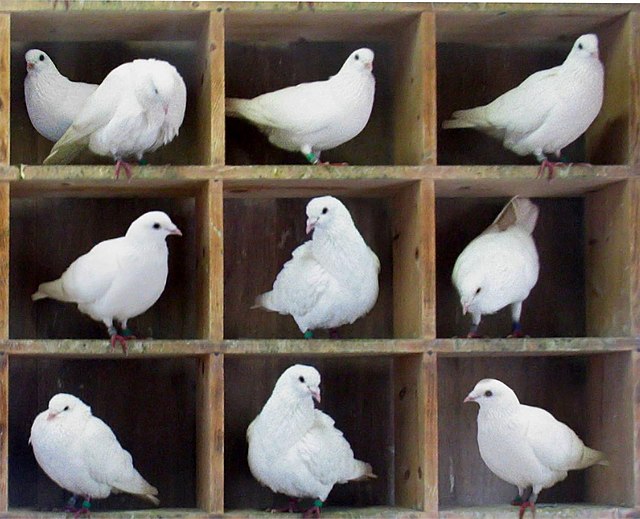In mathematics, the pigeonhole principle states that if n items are put into m containers, with n > m, then at least one container must contain more than one item. For example, of three gloves, at least two must be right-handed or at least two must be left-handed, because there are three objects but only two categories of handedness to put them into. This seemingly obvious statement, a type of counting argument, can be used to demonstrate possibly unexpected results. For example, given that the population of London is more than one unit greater than the maximum number of hairs that can be on a human's head, the principle requires that there must be at least two people in London who have the same number of hairs on their heads.
Pigeons in holes. Here there are n = 10 pigeons in m = 9 holes. Since 10 is greater than 9, the pigeonhole principle says that at least one hole has more than one pigeon. (The top left hole has 2 pigeons.)
Pigeon-hole messageboxes at Stanford University
Peter Gustav Lejeune Dirichlet
Johann Peter Gustav Lejeune Dirichlet was a German mathematician. In number theory, he proved special cases of Fermat's last theorem and created analytic number theory. In analysis, he advanced the theory of Fourier series and was one of the first to give the modern formal definition of a function. In mathematical physics, he studied potential theory, boundary-value problems, and heat diffusion, and hydrodynamics.
Peter Gustav Lejeune Dirichlet
Dirichlet was married in 1832 to Rebecka Mendelssohn. They had two children, Walter (born 1833) and Flora (born 1845). Drawing by Wilhelm Hensel, 1823




